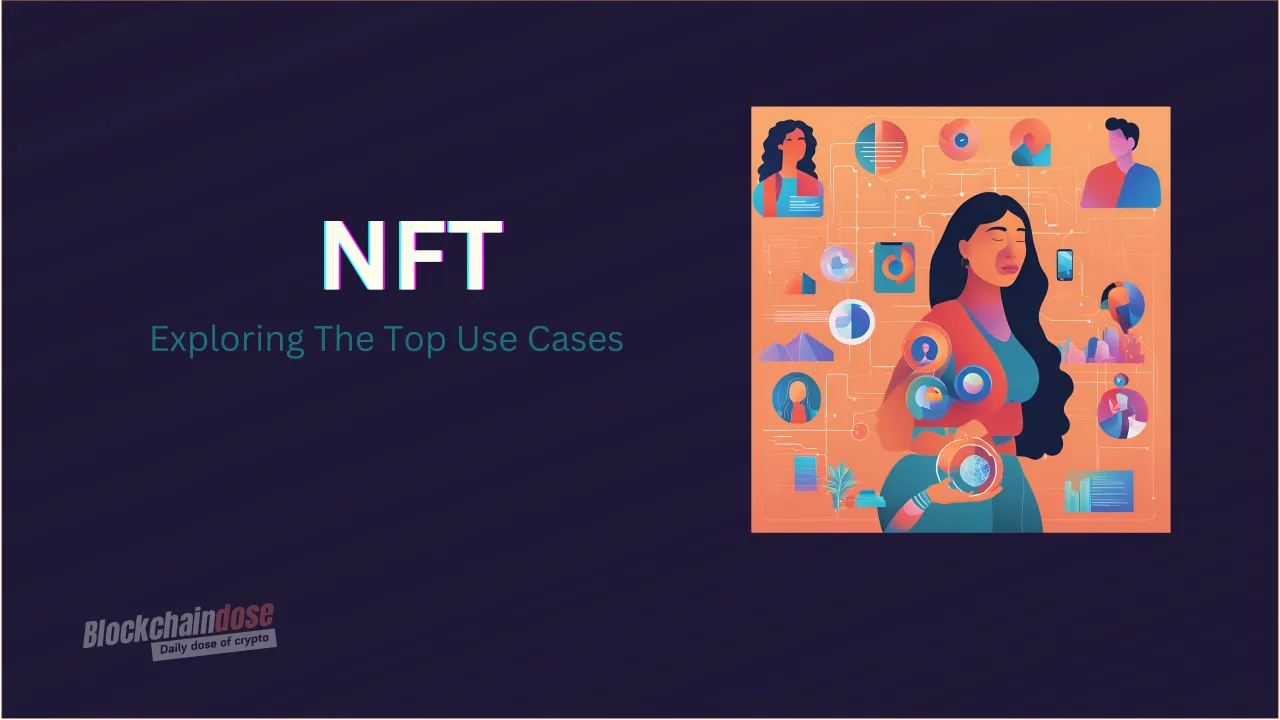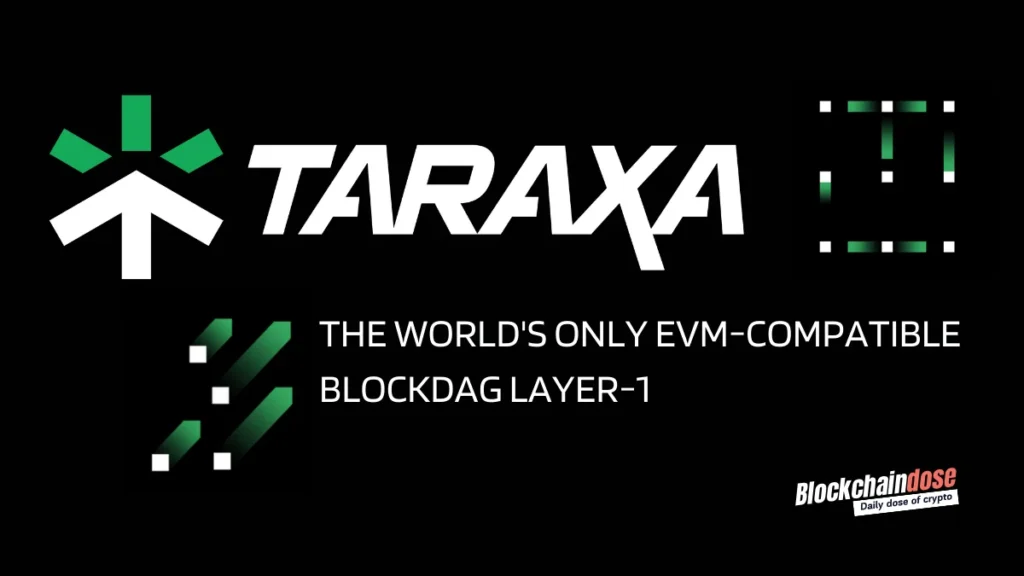Think NFTs are merely digital art? Think again. NFT use cases are expanding across industries.
From early origins and experiments with coloured coins and counterparties, NTFs have truly evolved over the past decade as new infrastructure supporting these assets emerges.
As of mid-2024, the NFT market is worth billions, nearing $10 billion. While this is a massive contraction from the preceding years, the NFT market is still growing, with new projects every other month.
Unlike many other assets, the buzz around NFTs since early 2021 has been global, attracting major brands, industries and investors. This explosive growth exposed many to Non-fungible tokens and their true potential.
Between late 2022 and 2024, the NFT market has seen a significant contraction in value, with many projects reporting massive drops in market caps. Yet, even amidst the contraction, NFT has transformed from merely a realm of speculative assets into a home for building sustainable communities and new narratives.
With the new narratives, NFT projects have also enjoyed increased adoption in various industries and segments of our world, both modern and traditional. Our guide focuses on the eight most popular NFT use cases in 2024. Among them are:
- NFTs applications in gaming
- NFTs applications in real estate
- NFTs applications in digital art
- NFTs applications in the music industry
- NFTs applications in the metaverse
- NFTs applications for identity verification
- NFTs applications in fashion
- NFTs applications in sports collectables
But before diving into NFT applications, it’s essential to know the attributes of these assets that encourage use cases beyond art and collectables.
Best Attributes of NFTs
Below are three key attributes contributing to increasing NFT applications in various industries:
- Non-fungible: The inability to replace, replicate or divide these assets makes them unique for various use cases.
- The scarce nature of non-fungible tokens makes anything pegged to them gain demand and value.
- Transferable — NFTs are easy to move; hence, anyone across the globe can own them. Their ability to move also means ownership is changeable.
NFT Use Cases in Gaming
Gaming is shaping up among the most popular NFT use cases in 2025.
In 2023, the gaming NFT market size stood at about $3.76 billion, with an expected CAGR of 60% in 2024. The rapid expansion of this universe is due to the invention of Play to Earn systems, where the thrill of gaming is merged with rewards.
In traditional games, players participate and earn in-game assets, including characters, weapons, skins, and more, which are usually tied to the game’s ecosystem. The sale or transfer of these in-game assets is often complex. But, the emergence of NFTs brought a whole new world for digital gamers where they can enjoy actual ownership of these assets.
Here are a few NFT use cases in gaming:
- Ownership of in-game assets — With NFTs, players can own in-game items whose value is transferable and redeemable outside the game. You can sell some in-game skins or weapons outside the game and get real-world value.
- Cross-game interoperability — You can use in-game assets from game A in game B, enjoying cross-chain functionality, user experience and engagement.
- Play-to-earn model — NFTs are a vital component of the P2E model pioneered in blockchain, where players earn assets by playing games.
- Scarcity and rarity — NFTs are created to be unique, rare and scarce in-game assets capable of holding value for the long term.
With a clear market cap of $421 million, Gods Unchained, based on Ethereum and Immutable X, towers over other NFT collections in stats like sales and volumes.
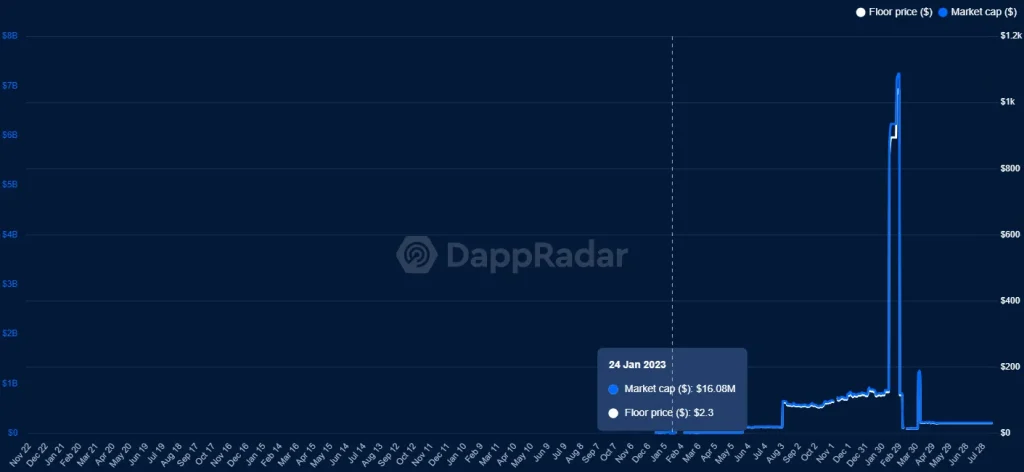
The chart shows the performance of God’s Unchained NFTs since birth, with the market cap hitting highs of $7.2 billion.
NFTs Use Cases in Real Estate
One of the most traditional sectors in the world, real estate, has been subject to major disruption since the birth of NFTs.
These tokens revolutionize the transactions and security of real estate investments, bringing opportunities to everyone. NFTs can tokenize properties, making it possible to purchase, sell and transfer them on the blockchain.
Owning a share of this traditional investment model is effectively streamlined by tokenizing the real estate world. Here are some actual real-world applications of NFTs in real estate:
- Tokenized Real Estate: NFTs make it possible to tokenize real estate properties by dividing them into small shares. High-luxury properties, which were only accessible to high-networth investors, are now accessible to small investors through fractional ownership.
- Instant transfer of properties: NFT tokenization eliminates paperwork, making property transfers instant.
- Global accessibility: With the power of NFTs, real estate investment becomes more globally accessible. International buyers will not be required to fulfill some legal obligations before owning a share of the property.
- Proof of ownership: NFTs keep permanent and verifiable records of ownership, reducing chances of error, fraud and even loss.
Despite the potential, using NFTs in real estate still has room to improve. For instance, the current regulatory frameworks must still evolve to accommodate blockchain-based property transactions. Only when NFTs are legally recognized as ownership documents will the NFT use case in real estate genuinely blow up.
NFTs Use Cases for Digital Art
In 2023, global art sales slowed down to about $65 billion, a 4% decline year on year. The US kept the lead in the art market, accounting for about 42% of the global sales volume. NFTs have been changing how we see art, from creation to purchasing, selling, and valuation.
Artists can now mint NFTs to guarantee ownership and authenticity of their pieces while enjoying monetization, transparency, and engagement opportunities.
NFTs verify uniqueness and ownership using blockchain technology. Artists can create digital pieces, images or videos and mint them as NFTs. All NFTs are unique tokens with metadata identifying the original creator and ownership history, proving that artwork is traceable.
Here are a few ways NFT is revolutionizing the art market:
- Royalties — With NFTs, you can embed royalties to your art, hence earning from every secondary sale of the NFT.
- Reducing entry barriers: The art space has been rife with barriers, especially for people with little knowledge. With NFTs, artists and collectors can enjoy an accessible platform to share and access art, hence no entry barriers.
- Intellectual property — Digital pieces of art are hugely vulnerable to theft. NFTs keep records of ownership of these art pieces, protecting them from duplication and robbery.
- Increased transparency — NFTs, a product of blockchain technology, benefit from the transparency of the digital ledgers. In turn, NFT arts also enjoy transparency.
Some good examples of art sold as NFTs include the $69 million Beeple’s sale at Christie’s and A Coin for the Ferryman by XCopy, which sold at about $6 million.
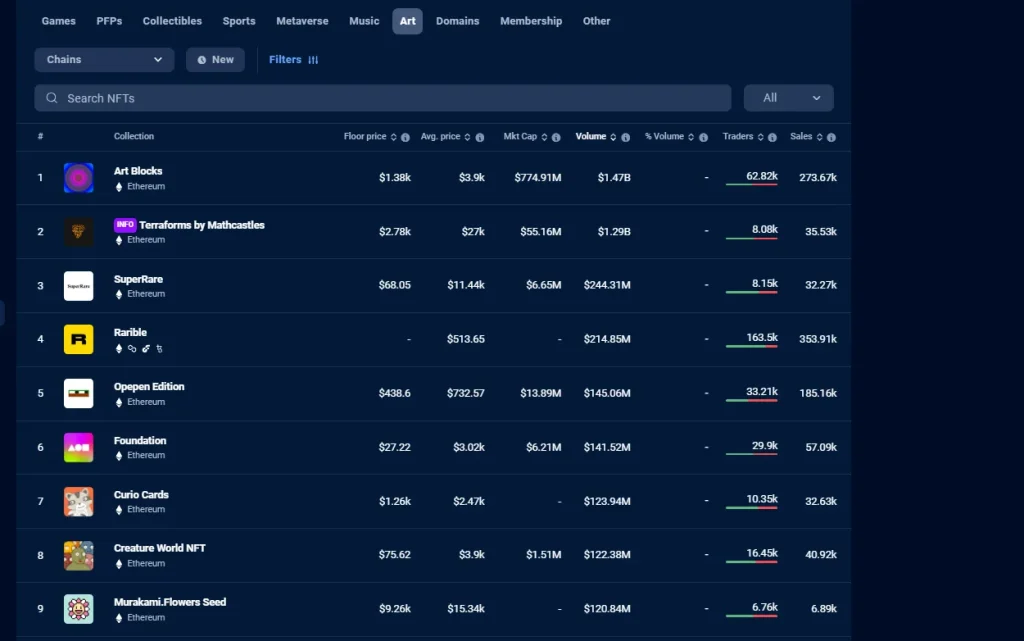
As of 2024, some popular art-focused NFT collections include Art Blocks, Rarible, SuperRare, Curio Cards and Opepen Edition.
NFTs Use Cases in the Music Industry
The adoption of NFTs in the music industry has increased since 2021.
In early 2021, Kings of Leon’s album sold an NFT in March 2021 entitled When You See Yourself, generating over $2 million in revenue in merely two weeks. 3LAU also made headlines by selling about 33 NFTs tied to his Ultraviolet album for about $11.6 million in Feb 2021.
Since then, many have discovered the massive transformative potential of NFTs, especially in the music industry. Here are a few ways NFTs revolutionize music space:
- Musicians can tokenize their works: Artists can tokenize their music directly to fans—the scarcity of NFTs curbs the issues of duplication and piracy.
- Revenue growth for artists: With NFTs, artists get almost direct access to the sales generated from their music. This new stream helps artists diversify their income sources, especially since streaming platforms pay low royalties.
- Direct access to royalties
- Direct engagement with fans

In the world of music NFTs, WVRPS by Waprsound, The Band Bears, EulerBeats Enigma, Tools of Rock and LoudPunx have been thriving among top NFT collections.
NFTs Use Cases in The Metaverse Virtual Worlds
NFTs are also a crucial component in the development of Metaverse, a term given for virtual worlds. In the Metaverse, NFTs represent various items, including virtual real estate, clothing and rare items.
Virtual worlds are user-generated environments combining commerce, gaming, social interactions, and more. One must have unique NFT avatars to participate in virtual worlds. These avatars are NFTs.
- NFTs’ scarce and immutable nature makes these digital assets critical to bringing scarcity, proof of ownership and identity in the virtual worlds.
- Interoperability — users can employ their different NFT assets in other worlds.
The virtual real estate business is booming with networks like Decentraland, Sandbox, and others.

The chart above displays the performance of virtual real estate NFTs associated with the Sandbox metaverse. Sandbox is one of the largest, most promising metaverses out there.
NFT Use Cases for Identity Verification
Identity fraud is one of the biggest enigmas of the digital universe. As per statistics, almost a third of US citizens have fallen prey to identity theft. Moreover, in the US alone, there are more than 50K data breaches yearly, a testament to the growing problem of identity theft.
In the context of digital identity, NFTs hold the power to revolutionize the industry, bringing various benefits, foremost being ease of verification.
Secondly, with NFTs, digital identities are transferable in a decentralized yet private manner. Moreover, the records are immutable, and you benefit from cross-chain interoperability. In essence, NFTs address the issues of security, privacy, and interoperability.
Here are a few perks of NFT-based digital identity systems:
- Access to virtual events
- Access to digital healthcare data systems
- Participate in virtual gaming and real estate.
- Be part of decentralized social media.
There are several real-world applications of NFTs in identity verification. For instance, Ethernity Chain introduced the concept of verifiable NFTs, proving the identity and authenticity of celebrities, athletes, and even artists.
PFP NFTs, a particular class of NFTs, thrive in the identity verification business. Picture for Profile NFTs can be used as profile pictures on social media platforms.
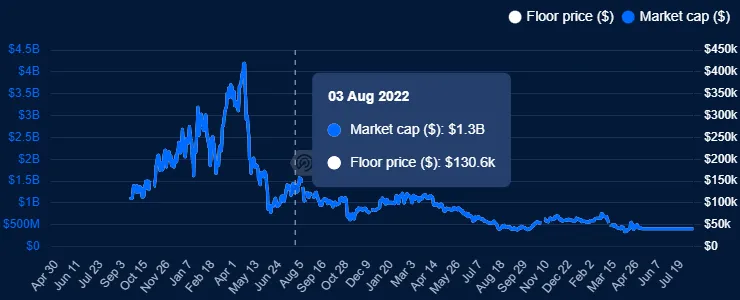
The most extensive PFP NFT collection is from Bored Ape Yacht Club, which has reported all-time volumes exceeding $4.25 billion. At some point in 2022, the market cap of the BAYC collection exceeded $4.17 billion, with the average NFT value hitting a floor price of $167K.
Other top PFP NFT collections include Cryptopunks, Azuki, Meebits, Moonbirds and Mutant Ape Yacht Club.
NFT Use Cases in Fashion
Can digital assets redefine fashion? Well, YES!
The fashion industry has been a critical component of creativity and innovation. However, the emergence of NFTs expanded the scope and possibilities for brands, designers and even average consumers.
With NFTs, brands can create digital fashion items like virtual clothing, accessories and other exclusive experiences. This new frontier redefines how we think about fashion. Moreover, with the actual integration of NFTs, brands get a new way of engaging with their customers.
In the virtual world, fashion items in the form of NFTs can be worn by avatars, bringing more personalization online.
Nike, Adidas fashion, Dolce & Gabbana, RTFKT Studios and various other fashion brands are investing in NFT-based fashion items.

Data by DappRada put RTFKT – CloneX Mintvial among the most popular fashion brand NFT collections, with the traded volume at $226 million. The charts indicate that the market cap of this NFT collection saw a significant dump in the past years, dropping from a peak of $2.2 billion.
NFT Use Cases in Sports Collectibles
Another big beneficiary of the emergence of NFTs is sports collectables.
As per a report by Statista, the global sports market could grow in value, peaking at over $680 billion by 2028.
Applying NFTs in sports can bolster the value even further. These digital assets provide sports fans a new way of owning, trading and interacting with their favourite athletes and teams.
Here are a few ways NFTs are empowering fans and athletes:
- Fans can collect and trade digital sports collectables and memorabilia, including balls, jerseys, cards and more.
- Fans can enjoy virtual stadium experiences, including meeting athletes and even going on tours.
- Fans can participate in decision-making
- Athletes can mint their NFTs and make incomes.
- Athletes interact with their fanbase.
- Individual athletes can use NFTs to protect their image rights.
One of the most successful sports NFTs collections is NBA Top Shot, a product of NBA and Dapper Labs. Fans can sell, buy and trade NBA highlights in the form of NFTs.

At Dapp Rada, Sorare, an Ethereum and Starkware-based collection, is mentioned as the top collection with the highest all-time volumes exceeding $749.97 million.
Others like NFL All Day and VaynerSports Pass VSP also thrive.
Sportspersons like Tom Brady, Tiger Woods, Christiano Ronaldo, Simone Biles, Rob Gronkowski, and Wayne Gretzky have also been active in the NFT space.
Final Word: NFT Applications 2024
Our guide took a keen dive into NFT use cases, highlighting the eight most popular in 2024. Whether gaming, real estate, art, music or sports, it is clear that NFTs are redefining value in almost every industry. This world is now open for everyone to participate and enjoy the benefits.

